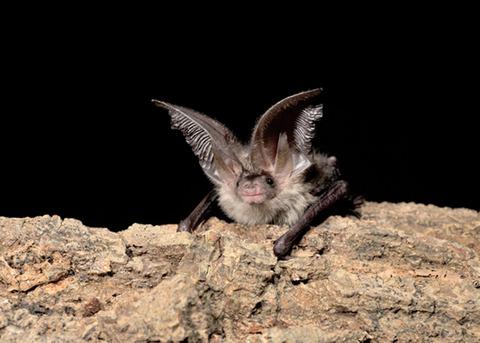当前位置:
X-MOL 学术
›
Anim. Conserv.
›
论文详情
Our official English website, www.x-mol.net, welcomes your
feedback! (Note: you will need to create a separate account there.)
Evaluating survey methods for bat roost detection in ecological impact assessment
Animal Conservation ( IF 2.8 ) Pub Date : 2020-04-02 , DOI: 10.1111/acv.12574 J. S. P. Froidevaux 1, 2 , K. L. Boughey 3 , C. L. Hawkins 3 , G. Jones 1 , J. Collins 3
Animal Conservation ( IF 2.8 ) Pub Date : 2020-04-02 , DOI: 10.1111/acv.12574 J. S. P. Froidevaux 1, 2 , K. L. Boughey 3 , C. L. Hawkins 3 , G. Jones 1 , J. Collins 3
Affiliation

|
Abstract The disturbance, damage and destruction of roosts are key drivers of bat population declines worldwide. In countries where bats are protected by law, bat roost surveys are often required to inform ecological impact assessments. Yet, evidence‐based information on survey methodology to detect bat roosts is crucially lacking, and failing to detect a roost can lead to serious errors during decision‐making processes. Here, we assess the efficacy of bat roost surveys in buildings as implemented in the UK. These consist of a daytime inspection of buildings, followed by a series of acoustic surveys at dusk/dawn if during the daytime inspection evidence of bats is found, or if the absence of bats cannot be verified. We reviewed 155 ecological consultants’ reports to (1) compare survey outcome between daytime inspection and acoustic surveys and (2) determine the minimum sampling effort required during acoustic surveys to be confident that no bats are roosting within a building. We focused on two genera of bats most frequently found in buildings in Europe – Pipistrellus (crevice roosting species with high‐intensity echolocation calls that can be easily detected by ultrasound detectors) and Plecotus (species that roost in open spaces and which emit faint echolocation calls that are difficult to detect). Daytime inspections were efficient in detecting open‐roosting species such as Plecotus species but were likely to miss the presence of crevice‐dwelling ones (here Pipistrellus species) which may lead to erroneous conclusions if no acoustic surveys are subsequently prescribed to confirm their absence. A minimum of three and four acoustic surveys are required to be 95% confident that a building does not host a roost of Pipistrellus species and Plecotus species, respectively, thus exceeding current recommendations. Overall, we demonstrated that reports submitted as part of an ecological impact assessment provide suitable data to test and improve survey methods.
中文翻译:

生态影响评估中蝙蝠栖息地检测的评估调查方法
摘要 栖息地的干扰、破坏和破坏是全球蝙蝠数量下降的关键驱动因素。在蝙蝠受法律保护的国家,蝙蝠栖息地调查通常需要为生态影响评估提供信息。然而,关于检测蝙蝠栖息地的调查方法的循证信息非常缺乏,未能检测到栖息地可能会导致决策过程中出现严重错误。在这里,我们评估了英国实施的建筑物中蝙蝠栖息调查的有效性。这些包括白天检查建筑物,然后在黄昏/黎明时进行一系列声学调查,如果在白天检查期间发现蝙蝠的证据,或者无法核实没有蝙蝠。我们审查了 155 份生态顾问的报告,以 (1) 比较白天检查和声学调查之间的调查结果,以及 (2) 确定声学调查期间所需的最低采样工作,以确保没有蝙蝠栖息在建筑物内。我们专注于在欧洲建筑物中最常见的两种蝙蝠 - Pipistrellus(具有高强度回声定位呼叫的缝隙栖息物种,可以通过超声波检测器轻松检测到)和 Plecotus(栖息在开放空间并发出微弱回声定位呼叫的物种)很难被发现)。白天的检查在检测开放栖息的物种(如 Plecotus 物种)方面是有效的,但很可能会错过缝隙栖息物种(这里是 Pipistrellus 物种)的存在,如果随后没有规定声学调查来确认它们的缺失,这可能会导致错误的结论。至少需要进行 3 次和 4 次声学调查才能 95% 地确信建筑物不分别栖息着 Pipistrellus 物种和 Plecotus 物种,从而超过了当前的建议。总的来说,我们证明作为生态影响评估的一部分提交的报告提供了合适的数据来测试和改进调查方法。至少需要进行 3 次和 4 次声学调查才能 95% 地确信建筑物不分别栖息着 Pipistrellus 物种和 Plecotus 物种,从而超过了当前的建议。总的来说,我们证明作为生态影响评估的一部分提交的报告提供了合适的数据来测试和改进调查方法。至少需要进行 3 次和 4 次声学调查才能 95% 地确信建筑物不分别栖息着 Pipistrellus 物种和 Plecotus 物种,从而超过了当前的建议。总的来说,我们证明作为生态影响评估的一部分提交的报告提供了合适的数据来测试和改进调查方法。
更新日期:2020-04-02
中文翻译:

生态影响评估中蝙蝠栖息地检测的评估调查方法
摘要 栖息地的干扰、破坏和破坏是全球蝙蝠数量下降的关键驱动因素。在蝙蝠受法律保护的国家,蝙蝠栖息地调查通常需要为生态影响评估提供信息。然而,关于检测蝙蝠栖息地的调查方法的循证信息非常缺乏,未能检测到栖息地可能会导致决策过程中出现严重错误。在这里,我们评估了英国实施的建筑物中蝙蝠栖息调查的有效性。这些包括白天检查建筑物,然后在黄昏/黎明时进行一系列声学调查,如果在白天检查期间发现蝙蝠的证据,或者无法核实没有蝙蝠。我们审查了 155 份生态顾问的报告,以 (1) 比较白天检查和声学调查之间的调查结果,以及 (2) 确定声学调查期间所需的最低采样工作,以确保没有蝙蝠栖息在建筑物内。我们专注于在欧洲建筑物中最常见的两种蝙蝠 - Pipistrellus(具有高强度回声定位呼叫的缝隙栖息物种,可以通过超声波检测器轻松检测到)和 Plecotus(栖息在开放空间并发出微弱回声定位呼叫的物种)很难被发现)。白天的检查在检测开放栖息的物种(如 Plecotus 物种)方面是有效的,但很可能会错过缝隙栖息物种(这里是 Pipistrellus 物种)的存在,如果随后没有规定声学调查来确认它们的缺失,这可能会导致错误的结论。至少需要进行 3 次和 4 次声学调查才能 95% 地确信建筑物不分别栖息着 Pipistrellus 物种和 Plecotus 物种,从而超过了当前的建议。总的来说,我们证明作为生态影响评估的一部分提交的报告提供了合适的数据来测试和改进调查方法。至少需要进行 3 次和 4 次声学调查才能 95% 地确信建筑物不分别栖息着 Pipistrellus 物种和 Plecotus 物种,从而超过了当前的建议。总的来说,我们证明作为生态影响评估的一部分提交的报告提供了合适的数据来测试和改进调查方法。至少需要进行 3 次和 4 次声学调查才能 95% 地确信建筑物不分别栖息着 Pipistrellus 物种和 Plecotus 物种,从而超过了当前的建议。总的来说,我们证明作为生态影响评估的一部分提交的报告提供了合适的数据来测试和改进调查方法。











































 京公网安备 11010802027423号
京公网安备 11010802027423号